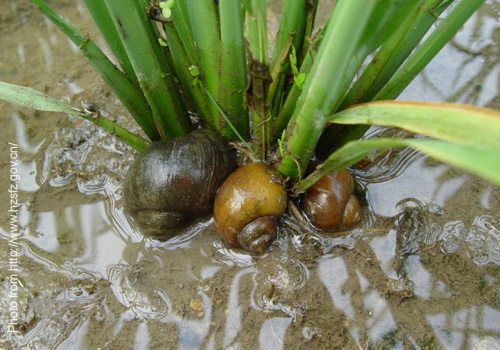
Poor water conditions or diet can cause issues such as These snails are usually resistant to diseases and infections. If breeding is not preferred, these eggs should be removed and destroyed. They will lay their eggs above the waterline, usually on the tank walls. Other snails and invertebrates: Apple snails can be kept with other types of snails and invertebrates, such as shrimp.Īpple snails are prolific breeders all they need is a healthy tank with a handful of their kind.Aggressive and/or large fish should be avoided. Peaceful community fish: Many peaceful community fish, such as Tetras, Guppies, and Corydoras, can coexist with Apple snails in the same tank.Here are some good tankmates for Apple snails:


They are generally peaceful and non-aggressive, which makes them good tankmates for many fish and invertebrates. In the aquarium, Apple snails can be fed a variety of foods, such as: In the wild, they feed on dead plants, algae, and detritus and may also scavenge on dead animal material. Live or artificial plants, driftwood, and rocks can provide shelter and variety to their environment. Decor: Plenty of hiding places and surfaces to climb on.Substrate: Fine gravel, sand, or rounded river rocks.Water quality: Regular water changes, decent filtration, and maintenance.The ideal tank conditions for Apple snails are: This operculum is usually brown or yellow and can be seen at the back of the shell when the snail is fully retracted. Apple snails are equipped with a siphon, a long tube-like structure that can be extended from the shell and which they use to breathe.Īpple snails have a hard, calcareous operculum, or “trapdoor,” which they use to seal themselves inside their shells when threatened.

The snail’s foot is used for crawling and attaching to surfaces, while the head has two tentacles with eyes at the tips. The body of the Apple snail is soft and slimy, with a dark gray or black head and foot that protrude from the shell.
#APPLE SNAIL EGGS SERIES#
The shell is usually brown but can also be yellow, gold, blue, or purple, and it has a series of whorls that gradually increase in size as the snail grows. They have a rounded, conical shell typically around 2 inches (5 cm) in diameter, although some specimens can grow up to 3 inches (7.6 cm) or more. Anatomy Apple snail.Īpple snails are medium-sized freshwater snails that have a distinctive appearance. They are now considered invasive in some areas, where their rapid reproduction and ability to outcompete native species can cause significant ecological problems. While Apple snails are native to South America, they have been introduced to many other parts of the world due to the aquarium trade. They prefer calm, shallow waters with a lot of aquatic vegetation and rocky substrates for attaching their eggs. Natural HabitatĪpple snails are native to South America and can be found in various freshwater habitats, including slow-moving rivers, ponds, swamps, and marshes. The other common name for the species, “mystery snail” is believed to have originated from the fact that these snails were once challenging to identify as a specific species, leading to their “mysterious” classification. The scientific name for the species, Pomacea, comes from the Greek word “pomax,” which means “cover” or “lid,” and refers to the operculum or “trapdoor” that the snail uses to seal itself inside its shell. However, they can also breed rapidly, which can sometimes be a nuisance. Apple snails (Pomacea bridgesii) are among the most popular freshwater aquarium species renowned for their size, striking coloration, and unique behaviors.Īpart from their unique appearance and behavior, Apple snails are popular among aquarium hobbyists because they are relatively easy to care for and help keep tanks clean by eating algae and other debris.


 0 kommentar(er)
0 kommentar(er)
